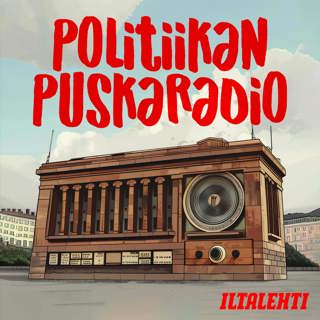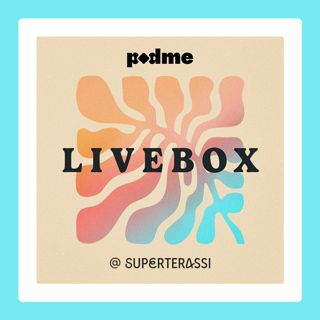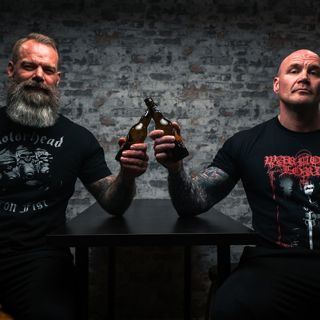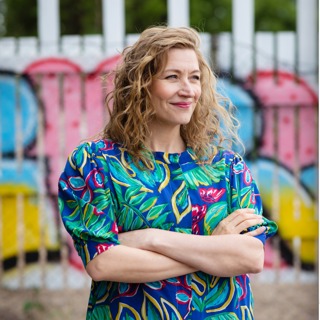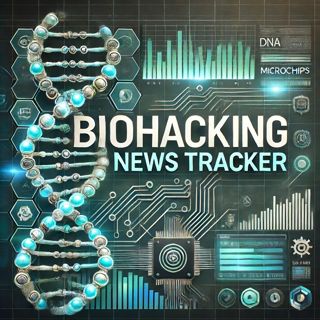
Biohackers Unlock Secrets to Enhanced Sexual Wellbeing, Flexibility, and Quitting Vaping
Biohacking, a trend that encapsulates the innovative use of science and technology to make significant enhancements to personal wellbeing, encompasses various dimensions including lifestyle changes, medical strategies, and even adjustments in sexual health. This approach has gained popularity among those eager to optimize bodily functions, manage personal health, and improve quality of life in unique ways.In the realm of sexual health for men, biohackers offer tips aimed at enhancing sexual well-being and breaking free from monotonous routines in the bedroom. Simple shifts in lifestyle, diet, stress management, and even altering body chemistry through supplements or hormonal adjustments are suggested for those looking to rejuvenate their sex life. These changes are not only about improving sexual performance but also about fostering deeper connections and enhancing overall well-being.Additionally, the benefits of increasing body flexibility extend beyond the obvious physical improvements. Studies and expert advice point toward the role of regular stretching and flexibility exercises in improving posture, enhancing blood circulation, and even supporting mental health. Such practices are believed to contribute not only to physical longevity but also to a better quality of life by reducing injury risk and promoting an active lifestyle.On another note, new laws impacting vaping in the UK have sparked discussions among biohackers about alternative ways to quit this habit. With disposable vapes being phased out and refillable options facing significant taxation, many are turning to biohacking solutions to address nicotine addiction. Techniques might include neurofeedback, supplementation, and lifestyle modifications tailored to reduce dependency and manage withdrawal symptoms.Biohackers explore various facets of human health and longevity, continuously pushing the boundaries of what is scientifically achievable through self-experimentation and technology. Whether it's enhancing sexual health, improving physical flexibility, or finding new ways to quit habits such as vaping, biohacking presents a blend of radical self-experimentation coupled with emerging science to optimize life in ways previously thought impossible. As this field grows, it inspires both skepticism and curiosity, driving further exploration into how far we can push the biology of our bodies.This content was created in partnership and with the help of Artificial Intelligence AI
2 Marras 20242min

"Biohacking Frontier: Enhancing Longevity through Technology"
Biohacking represents an exciting frontier in modern health science, focusing on optimizing human performance, health, and wellbeing through various methods, including gene editing, supplements, and lifestyle modifications. The term "biohacker" describes an individual who uses these techniques to make tangible changes to their own biology. As biohacking continues to evolve, several tools have become fundamental in advancing this field, particularly in enhancing longevity and revolutionizing health diagnostics.One of the most talked-about biohacking tools is NAD+ IV therapy. NAD+ or Nicotinamide Adenine Dinucleotide is a vital coenzyme found in all cells and supports several crucial functions, like metabolism, cell repair, and energy production. Over time, NAD+ levels naturally decline in the human body, which is linked to aging and age-related diseases. By receiving NAD+ intravenously, individuals might rejuvenate cells and potentially slow aspects of the aging process, thereby enhancing vitality and increasing longevity.In conjunction with direct interventions like NAD+ IV therapy, the integration of advanced technology such as AI-powered diagnostics is playing a transformative role. AI algorithms, when applied to MRI and retinal scans, can detect early signs of diseases much earlier than traditional methods. This early detection is critical in extending human lifespan and vastly improving the quality of life. The precise analysis provided by AI helps in identifying patterns that may not be visible to the human eye, facilitating personalized medicine approaches that could preemptively treat or manage potential health issues.Moreover, the potential DNA biohacking posits thrilling possibilities. DNA biohacking involves making small, precise modifications to an individual's genetic code to prevent disease, enhance physical abilities or even potentially reverse the effects of aging. With CRISPR technology becoming more accessible, targeted genetic interventions are becoming a feasible route for biohackers seeking longevity.These technologies and methods signify a shift toward more personalized and proactive approaches to health and aging. Biohacking not only grants individuals more control over their health outcomes but also contributes to the broader understanding of longevity and wellness. As research continues and these tools evolve, the possibility of significantly extended, healthier lifespans could become a reality for the larger population. This convergence of biohacking and advanced diagnostics foretells a future where life expectancy could expand dramatically, driven by enhanced preventative care and cutting-edge medical technology.This content was created in partnership and with the help of Artificial Intelligence AI
31 Loka 20242min

Biohacking Frontier Redefines Human Capabilities
Biohacking represents a rapidly evolving frontier where technology intersects with biology. Often considered part science, part self-improvement practice, biohacking can range from simple lifestyle and dietary changes to complex genetic edits and implant technology, aiming at enhancing the body's functionality.Red Light Therapy (RLT) glasses, a trending product among biohackers, are designed to expose the eyes to wavelengths of red light purported to help manage circadian rhythms, improve sleep quality, or enhance cognitive function. As we head into 2024, an increasing number of consumers are interested in these glasses, prompted by promising research around light therapy's benefits for mental and physical health.Biohackers have long explored ways to merge digital technology with the human body to enhance efficiency. One notable integration is the development of implantable wallets, where tiny devices capable of conducting cryptocurrency transactions are implanted into the body. This fusion of crypto technology with human physiology not only emphasizes the extent of biohacking's reach but also raises ethical, health, and security discussions.In addition to wearable and implantable tech, biohacking extends into genetic realms. Some biohackers engage in DIY genetic engineering, using tools like CRISPR to self-administer gene therapies aimed at improving or augmenting natural capabilities. Such practices, while pushing the envelope on personal enhancement, also generate significant controversy regarding safety, ethics, and regulation.Biohacking's reach intersects with everyday health and wellness through initiatives like seminars and workshops aimed at educating the public on how to 'hack' their biology for better health. An example is the forthcoming event at PALM Health on November 15, led by Dr. Lauren Dal Farra. Aimed particularly at women, the session titled "Biohacking Your Biological Age" proposes ways to use biohacking techniques to promote longevity and reverse aging.As biohacking continues to grow, guided by both community experimentation and scientific progress, it shapes a future where the lines between technology and biology blur, offering vast but equally challenging potentials to redefine human capabilities. Ensuring it evolves safely, ethically, and beneficially remains a collective responsibility of the biohacking community, regulators, and the global society at large.This content was created in partnership and with the help of Artificial Intelligence AI
29 Loka 20242min

"Biohacking Revolutionizes Self-Improvement, Boosts Human Potential"
Biohacking has emerged as a pioneering approach to self-improvement that blends cutting-edge scientific research with lifestyle changes to enhance the body's natural capabilities. Often likened to DIY biology, biohacking encompasses a wide array of activities ranging from genetic engineering to medical therapies and lifestyle interventions aimed at optimizing human performance and wellbeing.One notable figure in the biohacking community is Bryan Johnson, a millionaire entrepreneur who has rigorously applied biohacking techniques to reverse signs of aging, such as hair loss and graying. Johnson's approach is holistic, involving a meticulous combination of diet, exercise, sleep management, and various high-tech treatments to reduce his biological age. His regimen is a testament to the potential of biohacking to not only enhance physical appearance but also improve overall health.Biohacking extends beyond individual efforts like those of Johnson and has spurred the creation of all-inclusive retreats that promise enhanced health and longevity through similar methods. These retreats offer a variety of services, including high-tech testing, biohacking treatments such as cryotherapy and infrared saunas, meditation, and breathwork exercises. Participants at these retreats can expect to engage in programs tailored to improve mental and physical health, with the ultimate goal of extending life quality and span.This modern fusion of biology and technology illustrates a growing trend in health and wellness spaces where science meets self-care. Biohacking's appeal lies in its empowerment of individuals to take charge of their own health through technologies and techniques that have traditionally been exclusive to medical professionals. As the community grows, both through grassroots movements and luxury wellness retreats, it opens up new possibilities for how we understand and enhance human capabilities.This content was created in partnership and with the help of Artificial Intelligence AI
27 Loka 20242min

Biohackers Push the Boundaries of Human Performance and Longevity
Biohacking, a term that sounds more like science fiction than an everyday practice, is increasingly entering the mainstream, driven by a mix of health enthusiasts, researchers, and entrepreneurs who share a goal to optimize human performance and well-being. Central figures in this movement are individuals like Taja Abitbol and Bryan Johnson, who each push the boundaries in unique ways.Taja Abitbol, the founder of Taja Drip, specializes in bio-hacking techniques aimed at enhancing physical and mental health. Among her focuses is the pursuit of restorative sleep—a crucial, often neglected component of wellness. Techniques in this area can range from adjusting sleep environments and diet to incorporating specific sleep-promoting supplements and mindfulness practices. The goal of such bio-hacks is to maximize the quality of sleep, which is essential for recovery, mood regulation, and overall health.On the more radical end of the spectrum is Bryan Johnson, who is boldly investing in methods to reverse aging. He claims to have significantly reduced his hair loss and graying by 70% through a detailed and rigorous regimen. While the specifics of Johnson’s strategies delve deeply into diet, exercise, supplements, and experimental therapies, his overarching aim is a testament to the broader biohacker ethos: to push the human body to its functional zenith, defying nature’s timetable.Further cementing biohacking's place in the modern health landscape is the Biohackers World Conference & Expo set to occur in Miami on October 26-27, 2024. This event exemplifies the growing community and interest in the field, providing a platform for enthusiasts and experts alike to share knowledge, discover new tools, and network with peers. The focus of such conferences is increasingly on personalized wellness—tailoring health practices and interventions to individual needs, genetics, and circumstances, which is a core principle of biohacking.The growing appeal of biohacking lies in its promise and versatility—offering everything from simple lifestyle adjustments for better sleep to ambitious attempts to reverse the aging process. As the community grows and the science evolves, it is clear that biohacking is more than a fleeting trend, representing a compelling intersection of technology, health, and human potential optimization. Whether for improving daily vigor or pursuing longevity, biohacking continues to attract those looking to take control of their own biological destiny.This content was created in partnership and with the help of Artificial Intelligence AI
26 Loka 20242min

"Biohackers Aim for 150-Year Lifespans, Raising Ethical Concerns"
Biohacking, a term that has surged in popularity due to individuals taking an active role in manipulating their biology to enhance their body's performance, longevity, and aesthetics, encapsulates a range of practices from simple diet adjustments to advanced genetic editing. A fascinating subset of this culture includes individuals like Kayla Barnes-Lentz and Warren Lentz who are not just casual participants but dedicated experimenters aiming for the ambitious goal of living healthily to 150 years old. Their story reflects a growing trend where lifestyle adjustments, combined with technological and medical advancements, are considered potential gateways to unprecedented life spans.The couple's methods likely involve a meticulous focus on diet, exercise, and possibly the use of supplements or more innovative technologies such as CRISPR for genetic editing, though specifics aren't detailed. Their intentions align with the broader aspirations of the biohacking community, where the objective is not only to extend life but to enhance the quality of those extra years.The discussion of whether such couples desire children introduces an interesting ethical and philosophical layer to the biohacking debate, considering the potential implications of passing on hacked genes or longevity-focused lifestyles to the next generation.Central figures like Dave Asprey, often credited as a founding father of biohacking, further exemplify the mainstreaming of this movement. Asprey, famous for his Bulletproof Diet and various lifestyle hacks aimed at boosting health and cognition, has founded Upgrade Labs in Park City. This facility exemplifies a hub where like-minded individuals can explore ways to enhance their body's performance and longevity through state-of-the-art technologies and therapies.Another compelling figure is a millionaire biohacker, 47, who has reportedly reversed his hair loss and the greying process, highlighting the aesthetic and self-enhancement side of biohacking. This area, albeit more controversial, lets individuals take an almost artistic approach to their physical self, tweaking and perfecting their bodies as if they were pieces of art, using themselves as canvasses for biological creativity.These narratives around biohacking, while inspirational to some, are not without controversy. Ethical issues concerning equity, consent in case of offspring, and the societal impact of life extension are hot topics within the community and wider public discourse. As biohacking moves from the fringes to more widespread acceptance, these debates are bound to intensify, questioning the boundaries of human augmentation and the very nature of life itself.This content was created in partnership and with the help of Artificial Intelligence AI
24 Loka 20242min

Biohacking Blends Biotechnology, Medicine, and Self-Improvement for Enhanced Human Capabilities
Biohacking has become a broad term encompassing a variety of practices aimed at modifying and enhancing the human body's capabilities and functions. This trend blends the spheres of biotechnology, medicine, and self-improvement, attracting not only scientists and technologists but also individuals looking for cutting-edge ways to boost health, performance, and longevity.One of the intriguing aspects of biohacking is its focus on geroscience, which investigates how to slow down the aging process to extend both lifespan and healthspan—the period of life spent in good health. Geroscience integrates studies from genetics, molecular biology, and pharmacology to understand the biological mechanisms of aging. Through this understanding, researchers aim to devise strategies that delay the onset of age-related diseases such as Alzheimer's, cancer, and heart disease, leading to an improved quality of life for the elderly.Biohacking techniques can range from simple lifestyle adjustments to more advanced medical interventions. Dietary approaches like intermittent fasting are popular among biohackers for their potential to trigger beneficial metabolic responses. Intermittent fasting involves alternating periods of eating and fasting, which proponents say helps with weight loss, improved mental clarity, and longevity.Cold therapy is another biohacking method gaining traction. Regular exposure to cold through practices like cold showers or ice baths is believed to enhance fat burning, reduce inflammation, and strengthen the immune system according to its advocates. On the more extreme end, some biohackers experiment with stem-cell injections, a practice that involves administering stem cells to regenerate or repair diseased tissues and organs. Although promising, stem cell therapies are still largely within the experimental stage, except for a few FDA-approved treatments such as bone marrow transplantation.Another controversial biohacking practice that attracted public attention was the infusion of plasma from young donors, claimed by proponents to rejuvenate aging bodies. This practice brought about significant ethical and medical concerns and was not widely supported within the scientific community, leading to discontinuation by some of those who initially supported it.In the realm of everyday wellness, biohacking also finds a place in products designed for daily use, such as grounding or earthing mats. These mats are designed to connect people with the electrical charges from the Earth, which proponents believe can reduce chronic inflammation, improve sleep, mitigate fatigue, and decrease stress.While biohacking continues to push the limits of what modern science can achieve in enhancing human health and longevity, it raises important ethical, safety, and efficacy questions. The field remains a mixture of grounded science and experimental practices, with a continuing need for more rigorous research to validate many of the health claims. As biohacking grows, it's essential for participants and observers alike to remain informed and cautious, adopting practices based on solid evidence to safely explore the frontiers of human health optimization.This content was created in partnership and with the help of Artificial Intelligence AI
22 Loka 20243min

"Biohacking Transforms Human Potential: DIY Biology, Nutrigenomics, and Grinder Modifications Reshape the Frontiers of Science"
Biohacking represents a broad term amalgamating biology with hacking, delivering a powerful subculture of do-it-yourself biology made up of individuals and communities known as biohackers. These enthusiastic groups and individuals often include scientists, enthusiasts, and advocates who experiment with biology. By implementing a variety of techniques, biohackers aim to enhance the human body's capabilities both in cognitive and physical aspects.Biohacking can be categorized generally into three different sectors: nutrigenomics, grinder biohacking, and DIY biology.1. **Nutrigenomics**:Nutrigenomics is a form of biohacking that delves into the way food influences genes. Here, biohackers aim to understand and manipulate their nutrition to optimize personal health and wellbeing. This can involve altering the diet based on personal genetic data to influence how effectively one metabolizes certain foods, and how nutrients affect aging, metabolism, and even mood.2. **Grinder Biohacking**:Grinder biohacking encompasses implanting devices into the human body to extend and enhance physical and cognitive capacities. Grinders might implant microchips for interfacing with technology, magnets for sensing magnetic fields, or develop new senses, such as infrared vision. They often employ a trial-and-error method, emphasizing enhancement over repair.3. **DIY Biology**:DIY Biology, often pursued in makeshift or community labs, involves non-professionals experimenting with biology. This could range from genetic engineering, like inserting bioluminescent genes into bacteria to make them glow, to yeast engineering for better beer. The ethos here revolves around open access and democratization of science, making scientific inquiry accessible to anyone.Biohacking raises interesting ethical, legal, and safety questions. The overarching concern centers around the idea of people conducting scientific experiments without standardized safety protocols, which can pose risks not only to the experimenter but also to the public. Moreover, biohacking also stirs debates on the ethics of self-modification and the potential to exacerbate social inequalities through access to enhancement technologies.As biohacking continues to evolve, it undoubtedly challenges traditional norms and regulations related to health and biological research. This emerging field necessitates a delicate balance between innovation and safety, underscoring the need for dialogue between biohackers, biologists, and policymakers to navigate the complexities of its future impact on society.This content was created in partnership and with the help of Artificial Intelligence AI
20 Loka 20242min





